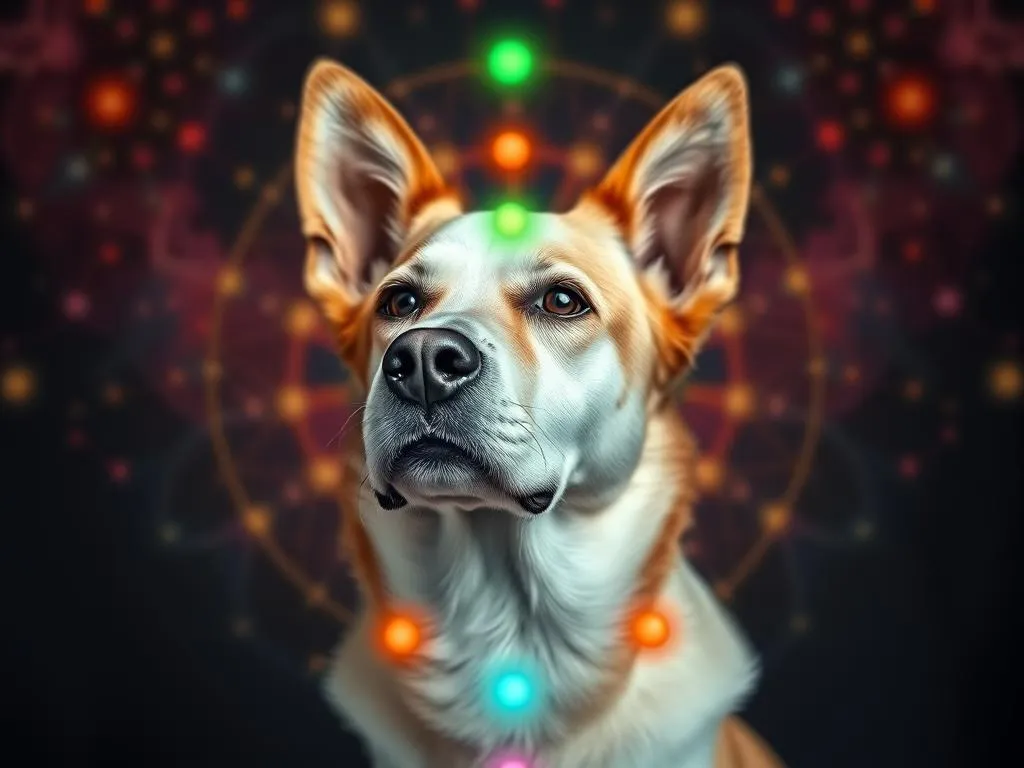
Chakras play an integral role in holistic health, originating from ancient spiritual practices in Hinduism and Buddhism. These energy centers, believed to influence both physical and emotional wellbeing, have garnered significant interest in recent years, especially as more pet owners seek alternative therapies for their furry companions. This leads us to an intriguing question: do dogs have chakras? Understanding this concept can shed light on our dogs’ health and emotional states, providing insights into their overall wellbeing.
Understanding Chakras
What Are Chakras?
Chakras are considered energy centers within the body that correspond to various physical, emotional, and spiritual aspects of our being. The term “chakra” comes from the Sanskrit word for “wheel,” indicating the spinning energy vortexes that are thought to exist along the spine. The seven main chakras in humans include:
- Root Chakra (Muladhara) – Grounding and stability.
- Sacral Chakra (Svadhisthana) – Emotions and creativity.
- Solar Plexus Chakra (Manipura) – Confidence and power.
- Heart Chakra (Anahata) – Love and compassion.
- Throat Chakra (Vishuddha) – Communication and expression.
- Third Eye Chakra (Ajna) – Intuition and insight.
- Crown Chakra (Sahasrara) – Spiritual connection.
Each chakra is associated with different physical and emotional states, and imbalances in these energy centers can manifest in various health issues.
The Role of Chakras in Energy Healing
In energy healing practices, it is believed that balanced chakras contribute to overall health. Techniques such as meditation, yoga, and breathwork are commonly employed to restore harmony within these energy centers. By focusing on clearing blockages and enhancing energy flow, individuals may experience improved physical health, emotional stability, and spiritual growth.
The Concept of Chakras in Animals
Do Animals Have Chakras?
The idea that animals, including dogs, possess chakras is gaining traction among holistic health practitioners. Just as humans have energy systems, many believe that animals also have similar energy centers. While the specific terminology might differ, the concept of energy flow and balance remains relevant across species.
Chakras in Different Species
Different animals are thought to have their own unique energy systems. For instance, cats, horses, and even birds are often examined through the lens of energy healing. While the fundamental principles of chakra systems may remain consistent, the expressions and influences of these energy centers can vary widely among species. Understanding these differences helps practitioners tailor their approaches to the specific needs of each animal.
The Chakras of Dogs
Overview of Dog Chakras
The concept of dog chakras draws parallels with human chakras but is adapted to meet the unique needs of our canine companions. Just like humans, dogs have seven main chakras, each associated with specific traits and emotional connections. Recognizing these chakras can help dog owners understand their pets’ behaviors and emotional states more deeply.
Details of Each Chakra
Root Chakra (Muladhara)
- Location: Base of the tail.
- Associated Traits: Safety, grounding, and stability.
- Signs of Imbalance: Anxiety, fearfulness, or a lack of confidence. A dog may exhibit excessive barking or destructive behaviors when this chakra is out of balance.
Sacral Chakra (Svadhisthana)
- Location: Just above the root chakra, near the lower abdomen.
- Emotional Connections: Pleasure, emotions, and creativity.
- Signs of Imbalance: Difficulty in social interactions, fear of new experiences, or emotional instability.
Solar Plexus Chakra (Manipura)
- Location: Just below the ribcage.
- Influence: Confidence, willpower, and self-esteem.
- Signs of Imbalance: Submissive behavior or aggressive tendencies can indicate issues with this chakra.
Heart Chakra (Anahata)
- Location: Center of the chest.
- Importance: Love, compassion, and emotional connections.
- Signs of Imbalance: Difficulty bonding with humans or other pets, signs of aggression, or excessive sadness can all point to a troubled heart chakra.
Throat Chakra (Vishuddha)
- Location: Throat area.
- Link to Communication: Expression and communication.
- Signs of Imbalance: Excessive barking or a lack of vocalization when needed may indicate issues with this chakra.
Third Eye Chakra (Ajna)
- Location: Between the eyes, on the forehead.
- Role: Intuition and insight.
- Signs of Imbalance: Inability to focus, confusion, or a lack of awareness can all suggest an imbalance.
Crown Chakra (Sahasrara)
- Location: Top of the head.
- Connection: Spirituality and connection to the universe.
- Signs of Imbalance: Disconnection from the environment or an inability to settle down can indicate issues with the crown chakra.
Recognizing Chakra Imbalances in Dogs
Signs of Chakras in Distress
Observing our dogs closely can reveal signs of chakra imbalances. Changes in behavior, energy levels, or overall health can indicate that something is amiss. Common signs include:
- Behavioral Changes: Increased aggression, withdrawal, or fearfulness.
- Physical Symptoms: Unexplained ailments, lethargy, or changes in appetite.
Common Issues Related to Chakra Imbalances
Chakra imbalances can lead to various health conditions in dogs. For instance, anxiety might stem from an imbalanced root chakra, while digestive issues could indicate problems with the solar plexus chakra. Emotional states can manifest physically, illustrating the deep connection between mind and body.
Healing and Balancing Dog Chakras
Energy Healing Techniques
To promote balance in their dogs’ chakras, owners can explore various energy healing techniques. Some effective methods include:
- Reiki: A form of energy healing that can help balance chakras.
- Crystal Healing: Utilizing crystals to align and rejuvenate energy centers.
- Aromatherapy: Using essential oils can create a calming environment and help balance energy.
Practical Steps for Dog Owners
Dog owners can take several practical steps to help balance their pet’s chakras:
- Meditation: Spend quiet time with your dog, focusing on calmness and love.
- Create a Calm Environment: Ensure their living space is peaceful and free from stressors.
- Physical Activity: Regular exercise can help balance energy and improve emotional wellbeing.
Professional Help
In some cases, it may be beneficial to seek assistance from animal holistic practitioners. These professionals can offer specialized knowledge and techniques for chakra healing. During a session, expect a combination of energy work and behavioral observations tailored to your dog’s specific needs.
Conclusion
The exploration of whether dogs have chakras opens up a fascinating world of holistic health and wellness for our furry friends. By understanding the significance of these energy centers, dog owners can gain valuable insights into their pets’ behaviors and emotional states. Holistic approaches to health, including chakra healing, can enhance the wellbeing of dogs, fostering a deeper bond between pets and their owners.
As we continue to delve into the realms of animal wellness and alternative therapies, embracing the concept of chakras offers an enriching perspective on how to care for our beloved dogs. Whether you’re looking to address specific behavioral issues or simply enhance your dog’s overall health, exploring chakra healing could be a rewarding journey for both you and your furry companion.









